Filter by
You must be a CTBUH Member to view this resource.
CCTV Headquarters
China Central TV Headquarters
Building
Completed, 2012
100020
office
composite
234.0 m / 768 ft
54
3
2702
75
7 m/s
316,000 m² / 3,401,396 ft²
You must be a CTBUH Member to view this resource.
You must be a CTBUH Member to view this resource.
Usually takes on the balance of the architectural effort not executed by the "Design Architect," typically responsible for the construction documents, conforming to local codes, etc. May often be referred to as "Executive," "Associate," or "Local" Architect, however, for consistency CTBUH uses the term "Architect of Record" exclusively.
The Design Engineer is usually involved in the front end design, typically taking the leadership role in the Schematic Design and Design Development, and then a monitoring role through the CD and CA phases.
The Engineer of Record takes the balance of the engineering effort not executed by the “Design Engineer,” typically responsible for construction documents, conforming to local codes, etc.
The Design Engineer is usually involved in the front end design, typically taking the leadership role in the Schematic Design and Design Development, and then a monitoring role through the CD and CA phases.
Other Consultant refers to other organizations which provided significant consultation services for a building project (e.g. wind consultants, environmental consultants, fire and life safety consultants, etc).
These are firms that consult on the design of a building's façade. May often be referred to as "Cladding," "Envelope," "Exterior Wall," or "Curtain Wall" Consultant, however, for consistency CTBUH uses the term "Façade Consultant" exclusively.
Material Supplier refers to organizations which supplied significant systems/materials for a building project (e.g. elevator suppliers, facade suppliers, etc).
You must be a CTBUH Member to view this resource.
Usually involved in the front end design, with a "typical" condition being that of a leadership role through either Schematic Design or Design Development, and then a monitoring role through the CD and CA phases.
Usually takes on the balance of the architectural effort not executed by the "Design Architect," typically responsible for the construction documents, conforming to local codes, etc. May often be referred to as "Executive," "Associate," or "Local" Architect, however, for consistency CTBUH uses the term "Architect of Record" exclusively.
The Design Engineer is usually involved in the front end design, typically taking the leadership role in the Schematic Design and Design Development, and then a monitoring role through the CD and CA phases.
The Engineer of Record takes the balance of the engineering effort not executed by the “Design Engineer,” typically responsible for construction documents, conforming to local codes, etc.
The Design Engineer is usually involved in the front end design, typically taking the leadership role in the Schematic Design and Design Development, and then a monitoring role through the CD and CA phases.
The main contractor is the supervisory contractor of all construction work on a project, management of sub-contractors and vendors, etc. May be referred to as "Construction Manager," however, for consistency CTBUH uses the term "Main Contractor" exclusively.
Other Consultant refers to other organizations which provided significant consultation services for a building project (e.g. wind consultants, environmental consultants, fire and life safety consultants, etc).
These are firms that consult on the design of a building's façade. May often be referred to as "Cladding," "Envelope," "Exterior Wall," or "Curtain Wall" Consultant, however, for consistency CTBUH uses the term "Façade Consultant" exclusively.
Material Supplier refers to organizations which supplied significant systems/materials for a building project (e.g. elevator suppliers, facade suppliers, etc).
Best Tall Building Worldwide 2013 Winner
2013 CTBUH Awards
Best Tall Building Asia & Australasia 2013 Winner
2013 CTBUH Awards
Beijing Regional Tour Report
20 September 2014 - Event
CTBUH Interviews Rem Koolhaas & David Gianotten from OMA
26 February 2014 - CTBUH Journal
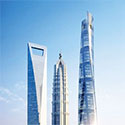
17 October 2016 | Beijing
China's Architecture Guidelines in the New Era
This presentation endeavors to establish guidelines for a new era of architecture in China, setting forth principles on improved policy implementation to promote the development...

11 October 2019
Tall Buildings in Numbers: 50 Years of Tall Building Evolution
CTBUH Research
The default image of the skyscraper for the past 50 years in the public imagination has likely been the extruded, rectilinear corporate “box,” derived from...
The CCTV headquarters is an unusual take on the skyscraper typology. Instead of competing in the race for ultimate height and style through a traditional two-dimensional tower soaring skyward, CCTV’s loop poses a truly three-dimensional experience, culminating in a 75-meter cantilever.
CCTV’s form facilitates the combination of the entire process of TV-making in a loop of interconnected activities. Two towers rise from a common production studio platform, the Plinth. Each tower has a different character: Tower 1 serves as editing area and offices, and the lower Tower 2 is dedicated to news broadcasting. They are joined by a cantilevering bridge for administration, the Overhang.
The main lobby, in Tower 1, is an atrium stretching three floors underground, and three floors up. It has a direct connection with Beijing’s subway network, and is the arrival and departure hub for the 10,000 workers inside CCTV headquarters. Connected to the lobby, 13 production studios (the largest is 2,000 square meters) perform the main function of the building: TV making.
The CCTV headquarters also facilitates an unprecedented degree of public access to the production of China’s media: a Public Loop takes visitors on a dedicated path through the building, revealing everyday studio work as well as the history of CCTV, and culminating at the edge of the cantilever, with spectacular views towards the CBD, the Forbidden City, and the rest of Beijing.
A Media Park forms a landscape of public entertainment, outdoor filming areas and production studios as an extension of the central green axis of the CBD.
The innovative structure of the CCTV Headquarters is the result of long-term collaboration between European and Chinese architects and engineers to achieve new possibilities for the high-rise. Early on, the team determined that the only way to deliver the desired architectural form was to engage the entire facade structure, creating in essence an external continuous tube system. The tube, which resists all of the lateral forces on the building and also carries much of the gravity force, is ideally suited to deal with the nature and intensity of permanent and temporary loading on the building.
The engineering forces at work are thus rendered visible on the façade: a web of triangulated steel tubes – diagrids – which, instead of forming a regular pattern of diamonds, become dense in areas of greater stress and looser and more open in areas requiring less support. The façade itself becomes a visual manifestation of the building's structure.
A versatile, efficient structure that bridges in bending and torsion between the Towers to create the continuous form of the Overhang section, the diagrid provides enough strength and stiffness in the Towers to carry loads to the ground. The structural system stiffens the podium and tower bases to favorably distribute loads to the foundation. It enables performance to be optimized, through adjustment of the bracing pattern, to satisfy contrasting demands of stiffness and flexibility.
The diagrid provides maximum flexibility for the bespoke planning of the interiors, since bracing is not needed within the floorplates. This allows large studio spaces to be laid out within the towers. It has enabled the Overhang section to be constructed without the need for temporary propping, since the braced skin provided stability as the steelwork was cantilevered out from the towers. This type of structure has a high degree of inherent robustness and redundancy, due to the potential for adopting alternative load paths in the unlikely event a key element’s removal.
The self-supporting hybrid facade structure features high performance glass panels with a sun shading of 70 percent open ceramic frit, creating the soft silver-grey color that gives the building a surprisingly subtle presence in the Beijing skyline.
Best Tall Building Worldwide 2013 Winner
2013 CTBUH Awards
Best Tall Building Asia & Australasia 2013 Winner
2013 CTBUH Awards

17 October 2016 | Beijing
China's Architecture Guidelines in the New Era
This presentation endeavors to establish guidelines for a new era of architecture in China, setting forth principles on improved policy implementation to promote the development...
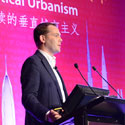
18 September 2014 | Beijing
The Public Meaning of Skyscrapers: Shenzhen Stock Exchange and CCTV
David Gianotten from OMA presents at the 2014 Shanghai Conference closing plenary on "The Public Meaning of Skyscrapers: Shenzhen Stock Exchange and CCTV."

07 November 2013 | Beijing
Best Tall Building Asia & Australasia: CCTV Headquarters: A New Typology for the Skyscraper
CCTV Headquarters singlehandedly paved the way from the height-obsessed, set-back skyscraper of the past to the sculptural and spatial skyscraper of the present, at the...

07 November 2013 | Beijing
CTBUH 12th Annual Awards Dinner
The 12th Annual Awards Ceremony & Dinner was held in Mies van der Rohe's iconic Crown Hall, on the Illinois Institute of Technology campus, Chicago....

07 November 2013 | Beijing
Rem Koolhaas discusses CCTV Headquarters, the Best Tall Building Worldwide and Asia & Australasia Winner. Rem discusses his views on architecture and the issues with...

21 September 2012 | Beijing
Interview: Interconnecting Tall Buildings
James Robinson of Hongkong Land Limited is interviewed by Jeff Herzer during the 2012 CTBUH Shanghai Congress at the Jin Mao, Shanghai. James talks about...

19 September 2012 | Beijing
With Asia's unparalleled and continued pace of growth fueled by economic development, the world order has shifted eastwards, and China in particular has risen as...

05 March 2008 | Beijing
Challenging Preconceptions of the High-Rise Typology
Ole Scheeren from the Office of Metropolitan Architecture, presented some of the strategies utilized by OMA to challenge preconceptions of the tall building typology at...

05 March 2008 | Beijing
Nonlinear Dynamic Earthquake Analysis of Skyscrapers
Sam Lee, of Guangzhou Scientific Computing Consultants, presented a solution on the ABAQUS platform at the CTBUH 8th World Congress in Dubai by selecting the...

11 October 2019
Tall Buildings in Numbers: 50 Years of Tall Building Evolution
The default image of the skyscraper for the past 50 years in the public imagination has likely been the extruded, rectilinear corporate “box,” derived from...
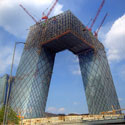
01 March 2018
The emergence of tall buildings in the late 19th century was possible by using new materials and separating the role of structures and that of...
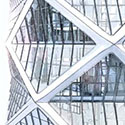
01 December 2016
There is much architectural and engineering literature which discusses the virtues of exterior bracing and diagrid systems in regards to sustainability - two systems which...
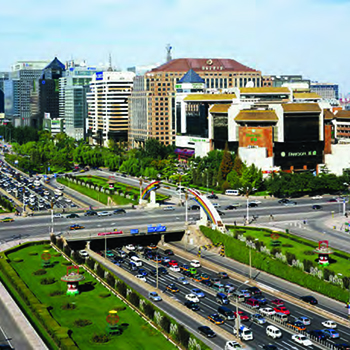
17 October 2016
Can we still save our city? How high can buildings in Beijing arise? Beijing has so many ancient buildings; can they coexist harmoniously with skyscrapers?...
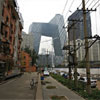
16 September 2014
The Public Meaning of Skyscrapers: Shenzhen Stock Exchange and CCTV
Through the designs of Shenzhen Stock Exchange and the CCTV Headquarters in Beijing, the paper illustrates the potential of skyscrapers in creating public meaning. This...
butyrskii_igor.jpg)
26 February 2014
On the occasion of receiving the Best Tall Building Worldwide award at the 12th Annual CTBUH Awards Symposium and Dinner for CCTV Headquarters, Beijing, Rem...
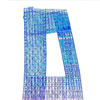
01 September 2013
Field Measurements of the New CCTV Tower in Beijing
The emergence of a growing number of tall buildings, often with unusual shapes and innovative structural systems, has led to the realization of the need...

21 September 2012
With Asia’s unparalleled and continued pace of growth fueled by economic development, the world order has shifted eastwards, and China has risen as the defining...

01 August 2012
Finding Structural Solutions by Connecting Towers
A study of a number of linked high-rise towers in China finds designs anchored by innovative, unimposing structural solutions, which address issues of costs and...

02 October 2008
Case Study: CCTV Building - Headquarters & Cultural Center
The new headquarters of China Central Television contains the entire television-making process within a single building. The 234m tall tower redefines the form of the...
21 September 2014
Attendees of the Beijing tour toured the new CBD development on the east side of town, projected to contain 15 towers, many of whose foundations were already visibly underway.
26 February 2014
On the occasion of receiving the Best Tall Building Worldwide award at the 12th Annual CTBUH Awards Symposium and Dinner for CCTV Headquarters, Beijing, Rem Koolhaas, founding partner, Office for Metropolitan Architecture (OMA), sat for an interview with Daniel Safarik, CTBUH Editor. Koolhaas was joined by David Gianotten, partner, OMA, who is intimately involved in the firm’s Asian projects.
7 November 2013
Rem Koolhaas, Founding Partner at OMA, presents on CCTV, the CTBUH Best Tall Buildings Asia & Australasia Winner at this year's awards symposium.
1 November 2013
“Towards Zero Carbon,” a collaborative design studio between Tongji University, CTBUH and the Illinois Institute of Technology, made a week-long visit to Chicago in November.
1 September 2013
The International Journal of High-Rise Buildings, Volume 2: Number 3 includes 8 papers focusing on pure research content and investigations in tall building design.
1 June 2012
The recently completed new headquarters of China Central Television contains the entire television-making process within a single building
Subscribe below to receive periodic updates from CTBUH on the latest Tall Building and Urban news and CTBUH initiatives, including our monthly newsletter. Fields with a red asterisk (*) next to them are required.
View our privacy policy